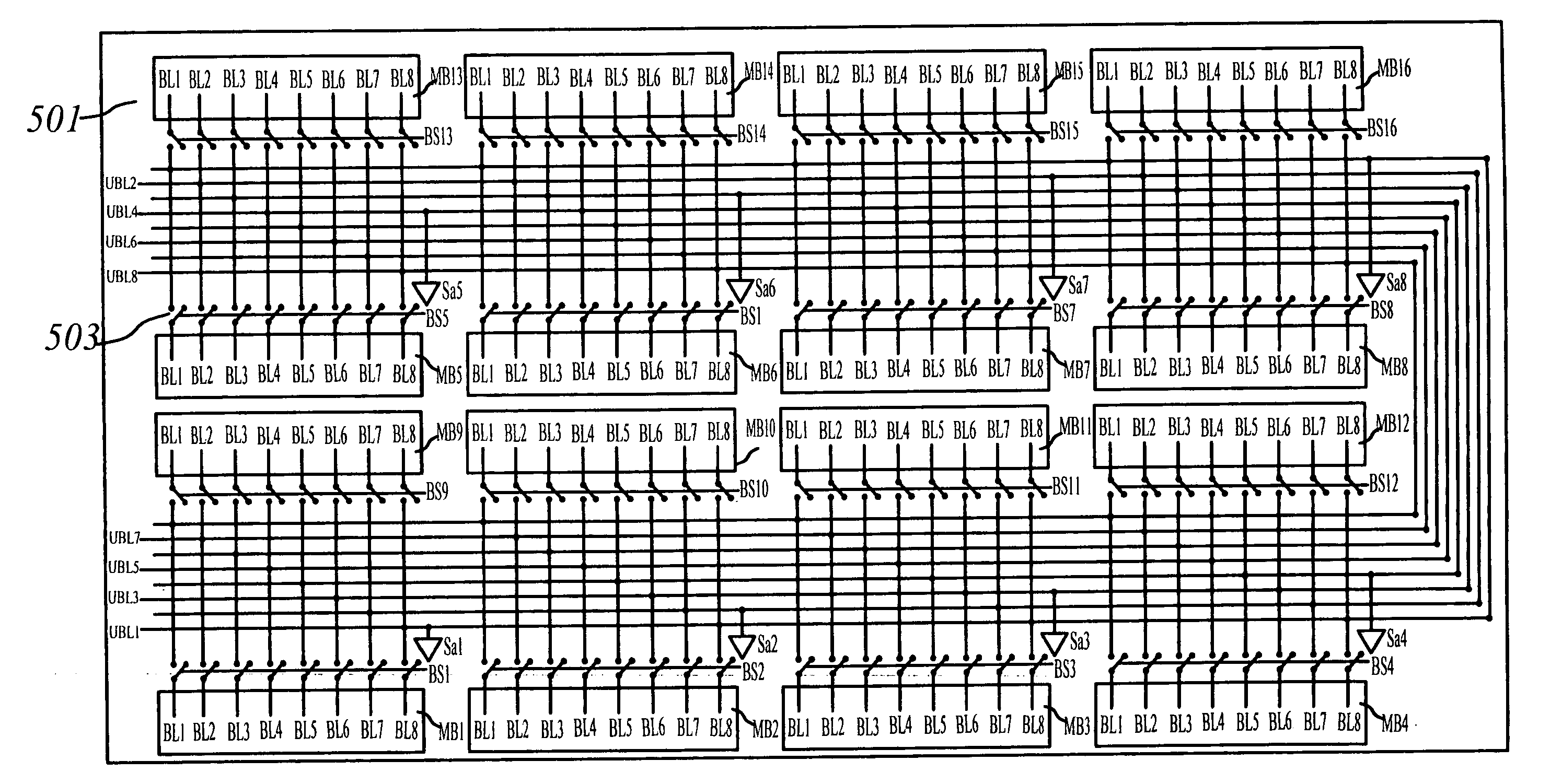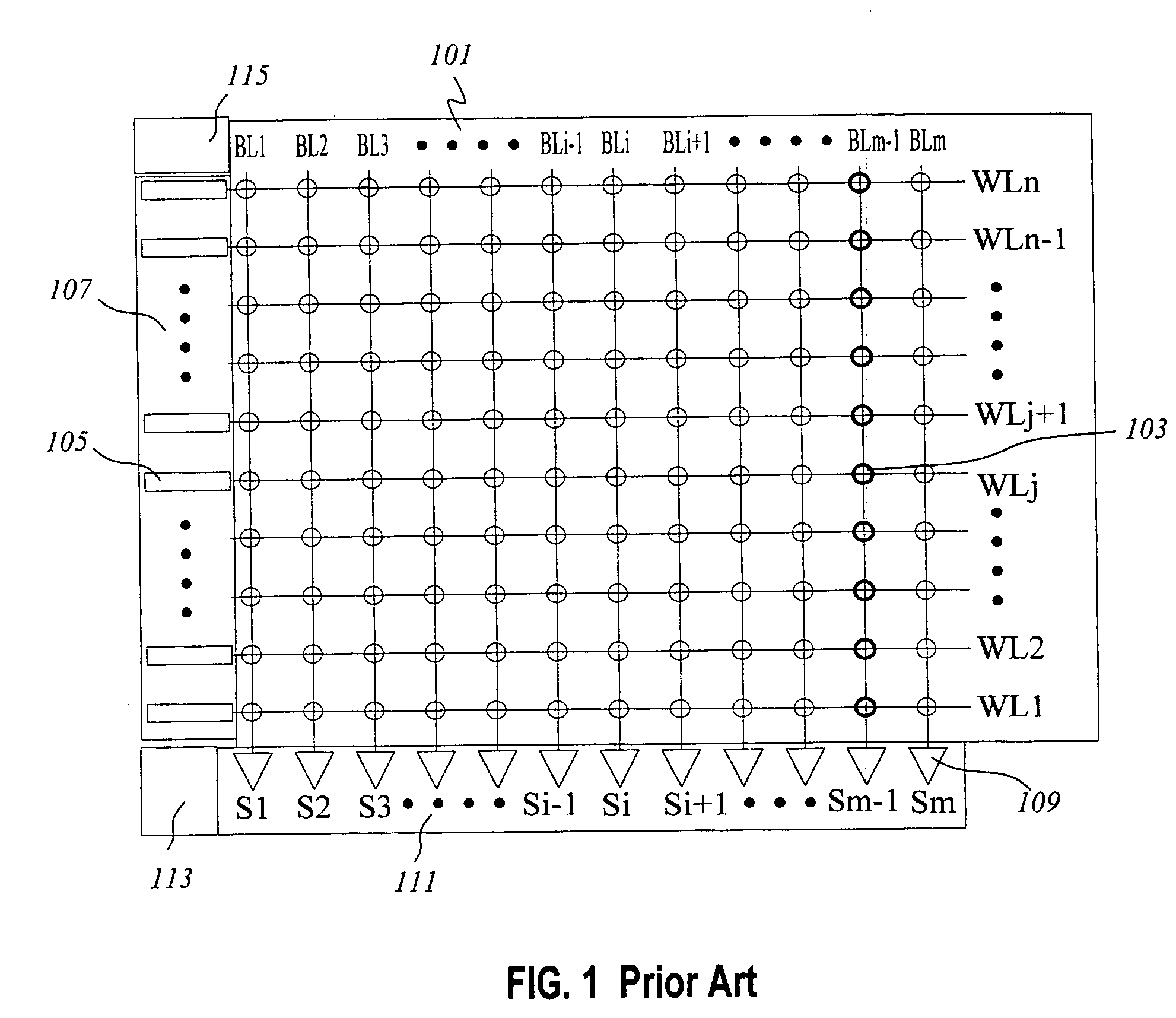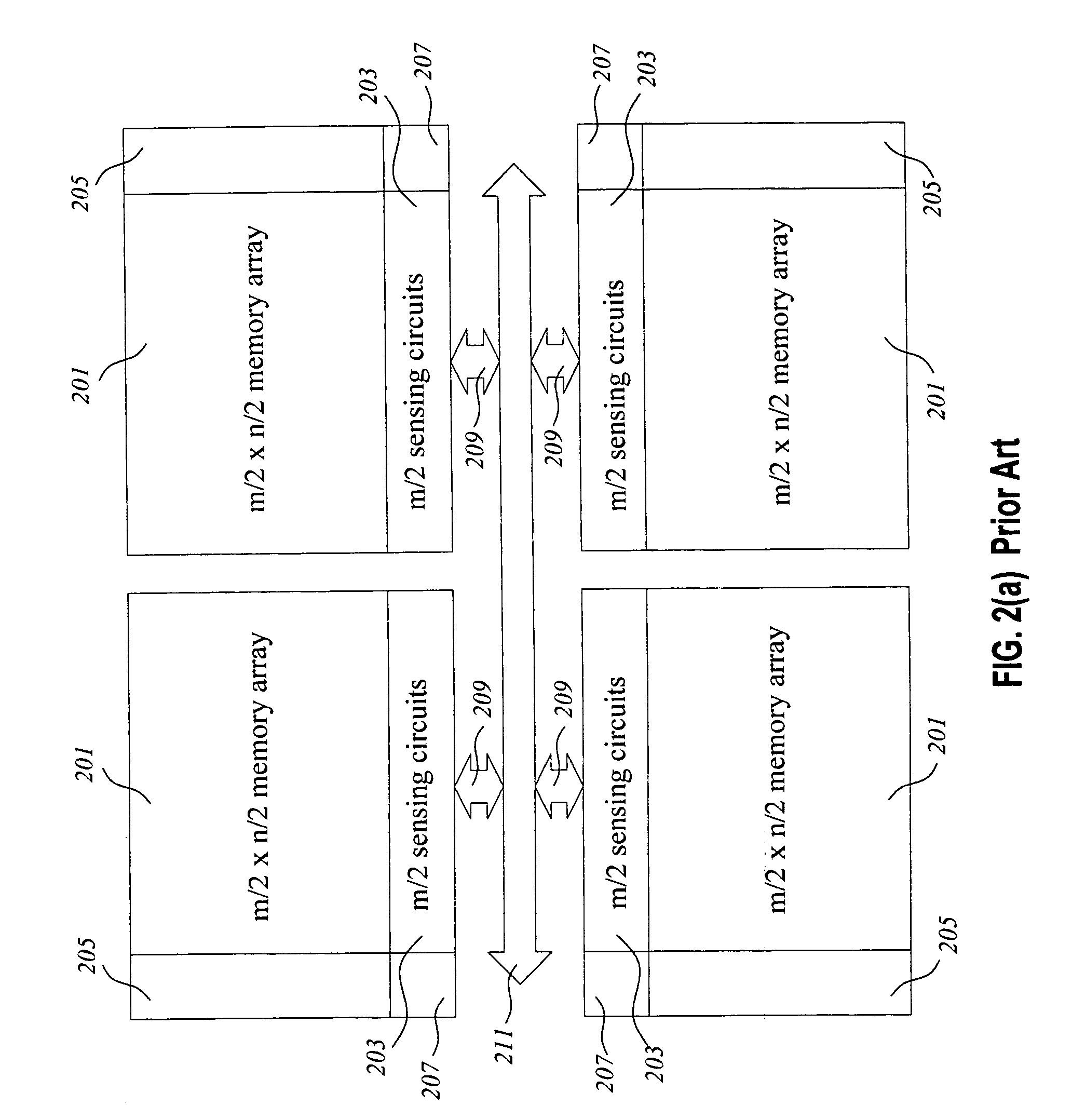Method for making high performance semiconductor memory devices
a memory device and high-performance technology, applied in information storage, static storage, digital storage, etc., can solve the problems of inability to operate at optimum speed, inability to achieve optimum speed, and large performance gap, so as to improve the performance of semiconductor memory devices, reduce noise sensitivity of memory devices, and improve the effect of semiconductor memory devices
- Summary
- Abstract
- Description
- Claims
- Application Information
AI Technical Summary
Benefits of technology
Problems solved by technology
Method used
Image
Examples
Embodiment Construction
[0050] Referring to the simplified symbolic diagram shown in FIG. 4 for the basic concept of the present invention. A memory device is arranged in multiple levels. At the top-level (403), the memory device appears to be a small array with small number of top level cells (413) on each side. Each top-level cell (413) also appears to be a small second level array (402) with a small number of second level cells (412). We can have many levels. Eventually, we will reach the bottom level (401) that is actually a small memory array with a small number of real memory cells (411). For example, a 1 G (billion)-bit memory array is configured into three levels.
[0051] The top level is formed as a “virtual” 32×32 array, the second level is formed as another “virtual” 32×32 array, while the bottom level is a real 32×32 memory array.
[0052] To access a set of data in the memory, the memory address is separated into three sub-sets to the decoders in three levels and decoded simultaneously. One botto...
PUM
 Login to View More
Login to View More Abstract
Description
Claims
Application Information
 Login to View More
Login to View More - R&D
- Intellectual Property
- Life Sciences
- Materials
- Tech Scout
- Unparalleled Data Quality
- Higher Quality Content
- 60% Fewer Hallucinations
Browse by: Latest US Patents, China's latest patents, Technical Efficacy Thesaurus, Application Domain, Technology Topic, Popular Technical Reports.
© 2025 PatSnap. All rights reserved.Legal|Privacy policy|Modern Slavery Act Transparency Statement|Sitemap|About US| Contact US: help@patsnap.com



